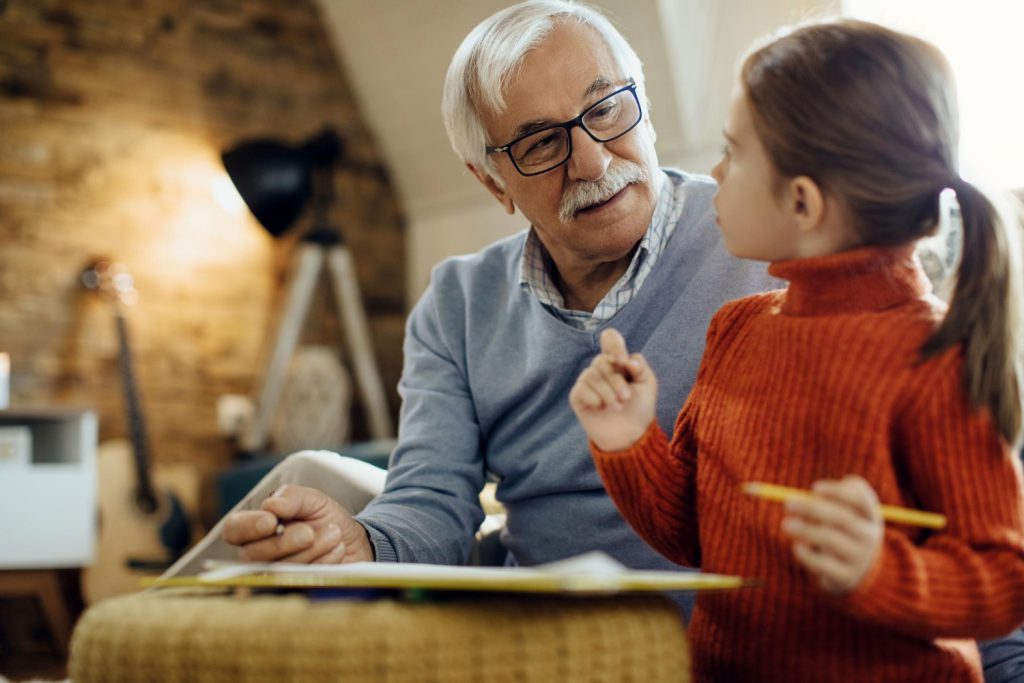Safeguarding Children Visiting Relatives in Care

The special attention and care that many grandparents provide can make a real difference in a child’s life. But more than that, children can make their grandparents feel needed and appreciated, especially if they are in care. Research suggests that elderly people in care are less likely to suffer from loneliness by interacting with children.
However, it is important to remember that not all care homes are designed for the ease of young visitors. Daniel Brown, the founder of Caredemy, shares what you should be looking at when taking your children for visits.
Accountability
Of course, care homes have a duty to their residents. But they also have a responsibility to provide visitors with a safe and secure environment. There is no better way to foster a culture of accountability than by putting a clear reporting procedure in place.
You need to make sure that all members of staff are trained to recognise the signs of neglect and abuse and understand that they have a responsibility to report any concerns to the appropriate authority.
Empowerment
While grandparents can play an important role in the upbringing of their grandchildren, little ones cannot be forced to visit their elderly relatives if it will put them in an uncomfortable position or they simply do not want to.
In England and Wales, grandparents do not have a legal right to see their grandchild. But it is important to encourage open communication so that children’s concerns are heard and they feel in control and supported during their visits.
Partnership
It is also a good idea to ask the care home about their established partnerships with local authorities and organisations that are involved in safeguarding. That way, you can be confident that they have access to resources, guidance and expertise to ensure that residents and their families are protected.
Prevention
On top of that, you need to make sure that the care home always takes a proactive as opposed to a reactive approach to safeguarding. Regular safeguarding training will help staff recognise the signs of abuse and neglect. Plus, it allows them to promote awareness and vigilance so that any concerns are addressed early on to prevent harm to visitors.
Proportionality
Some children may be at a different level of risk when visiting their relatives and the care home needs to be made aware of this to mitigate the risk and ensure a safe environment for all young visitors. It is wise to speak to carers about any additional needs that your child has before they visit.
Protection
If a young visitor is a victim or at risk of abuse, care homes need to do what they can to ensure that they can access key child protection services.
Key Considerations When Families are Visiting
It is fair to say that visiting a care home can be an emotional experience for many children. So, it is important that children are prepared for visits by discussing the care home setting, as well as any potential changes to their grandparent’s health and appearance.
Throughout visits, carers and parents need to be on hand to supervise interactions with the resident and address any concerns or questions that the child may have. After all, the care home setting may pose a risk to your little one’s safety. Equally, you should discuss visits with staff should in advance to ensure that they are aware of any concerns that may impact your child.
What Role Care Homes Play
If you are concerned, it might be worth having a conversation with the care home about their policies. Every care home should have a specific set of policies that are designed to protect young visitors. This includes having clear guidelines in place that outline expectations and protocols for staff when interacting with children.
The policy should also cover the procedures for supervising family interactions and reporting concerns. This will ensure consistency and accountability when it comes to dealing with safeguarding issues.
It may also be worth having a discussion about their training policies. Every member of staff should receive comprehensive training and education on child safeguarding. Generally, training will need to cover the following areas:
- Recognising signs of neglect and abuse
- The procedures for reporting safeguarding concerns
- Identifying sources of support
- Understanding the impact that exposure to substance abuse and domestic violence can have on a child’s well-being and safety
Regular training refreshers ensure that staff members are up-to-date with the best safeguarding practices, enhancing their ability to protect children during their visits.
When it comes down to it, children need to feel safe when visiting their elderly relatives in care. Parents and guardians need to make sure that care homes have measures in place, such as controlled access to certain areas and child-friendly spaces to make sure that visits are meaningful.
Daniel Brown is the founder of Caredemy, a leading provider of CPD-accredited health and social care courses. Cardemy helps carers improve their knowledge and skills to ensure that children and their families have the right support when they need it the most. Find out more about Caredemy’s courses on their website.
Image by Drazen Zigic on Freepik

